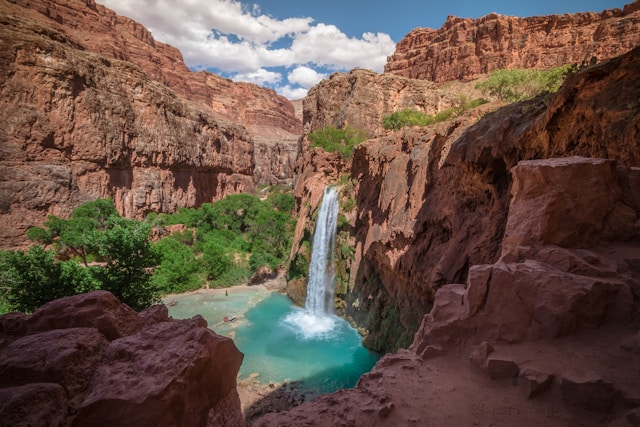The Best Places to Visit in Arizona Part I
Hello, hello,
Today we are going to discuss one of our favorite topics: The best places to visit in the state of Arizona. Thankfully, we here are blessed with some of the most amazing natural resources not only in the US but also across the world.
That is why we have dedicated a long article to the natural beauty of Arizona. In the paragraphs to follow, you will learn about our scenic national parks, lush forests, picturesque lakes, and other landmarks you need to visit at least once in your lifetime.
We invite you to read below and discover the magic of Arizona. Our state is tremendously rich in sightseeing destinations for those who love nature. Whether you are an individual traveler, a group of friends, or a family of any size, you will be lucky to witness some of the most breathtaking views that Mother Earth has to offer.
Hence, we have a lot of writing and reading to do, so let us get started. Keep scrolling and learning about the enchanting nature of Arizona.
Grand Canyon National Park
Grand Canyon National Park is one of the top sightseeing destinations for tourists across the globe. Travelers from all continents flock all year round to see Grand Canyon’s mesmerizing beauty. There is hardly anything as captivating as standing among the majestic cliffs and the gaping gorge below and soaking in Mother Nature’s might. Covering an area of 1,217,262 acres, or 1,901.972 sq mi/4,926.08 km2, the park offers a wide variety of views and experiences.
Here is a little bit of background on Grand Canyon National Park: The site is located in northwestern Arizona, near the cities of Fredonia on the North Rim and Tusayan on the South Rim. The Grand Canyon National Park was founded on February 19, 1919. You might find it surprising, but it was only the fifteenth site in the US to be named a national park.
Nowadays, however, the Grand Canyon is considered one of the wonders of the world. The national park has also been recognized as a UNESCO World Heritage Site.
To give you a more precise idea of the site’s popularity across North America and the rest of the world, let us just mention that in 2023 alone, the Grand Canyon National Park received a total of 4.7 million recreational visitors.
Canyon de Chelly National Monument
Canyon de Chelly National Monument is another astoundingly beautiful natural park. While it is popular within North America, it is not so well familiar across the rest of the world, which – in our humble opinion – is a total loss. However, we are here to make amends with the Canyon de Chelly National Monument, which is by far one of our favorites.
This national park occupies a vast area of 83,840 acres, or 131 sq mi; 339 km2. It actually comprises three big canyons – de Chelly, del Muerto, and Monument. It is located in the northeastern part of the state of Arizona, in the Four Corners region, on the Navajo Nation’s tribal lands.
To this day, it is the home to the Dine families. They live here, farm the local lands, and raise livestock. At present, approximately 40 Navajo families live in the Canyon de Chelly National Monument park.
The site is the property of the Navajo Tribal Trust of the Navajo Nation. It is interesting to note that Canyon de Chelly is the only one of the US National Park Service units that is managed this way.
To protect the area, the access to the canyon floor is tightly controlled. Visitors are allowed within the canyons only under the condition of being accompanied by an authorized Navajo guide or an official park ranger. The White House Ruin Trail makes the only exception to this rule. Unfortunately, this trail closed during the COVID-19 pandemic and is now awaiting further notice for opening.
Here is a video guide to Canyon de Chelly National Monument park:
Monument Valley
Here we come to a place you might recognize from the movies. Monument Valley has hosted the set of many Western films from back in the day as well as recent Hollywood blockbusters and TV shows.
Part of the Colorado Plateau, the Monument Valley National Park spreads over both Arizona and Utah. Some of its major formations include the Hunts Mesa, Merrick Butte, and West and East Mitten Buttes.
The valley floor is quite tall with elevation ranging between 5,000 feet to 6,000 feet above the sea level. In meters that would be between 1,500 m to 1,800 m. The floor itself is composed of siltstone of the Cutler Group and different kinds of sand deriving from it. The sands have been naturally deposited thanks to the activity of the meandering rivers carving the valley.
Monument Valley has very specific colors thanks to the chemical components of the sands. For instance, the vibrant red color is due to the iron oxide found in the weathered siltstone. There are also dark, blue-gray rocks whose color comes from the manganese oxide.
Some of the other sightseeing opportunities we will discuss in our next article include:
- Glen Canyon National Recreation Area
- Sedona
- Vermilion Cliffs National Monument
Keep reading and stay tuned!

